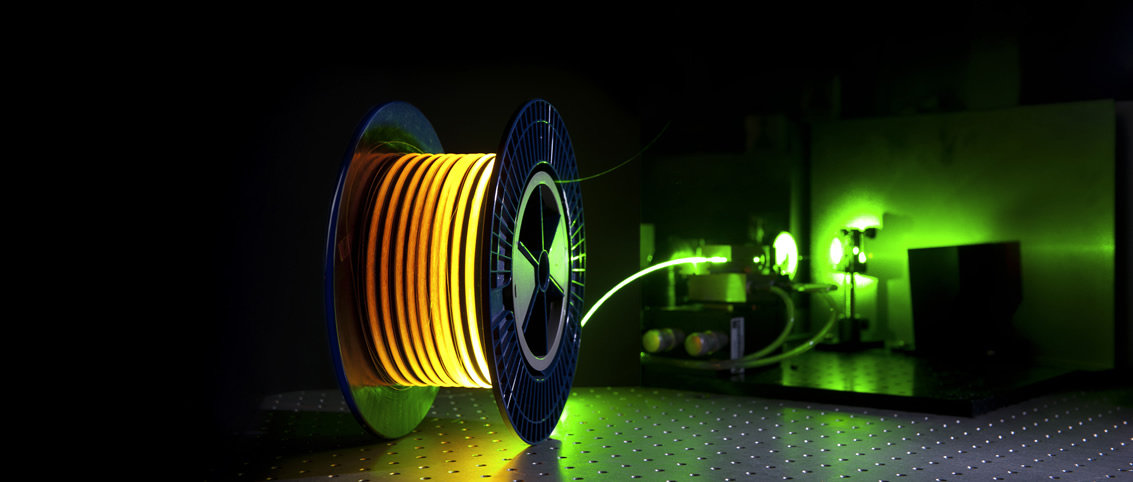Hartley News Online Your alumni and supporter magazine
Photonics, the study of light, has a huge impact on our everyday lives – from powering the internet to navigating airlines. To mark the International Year of Light, Professor Sir David Payne, Director of the Optoelectronics Research Centre (ORC) tells us more about this exciting field of research.
How has research here at the University contributed to photonics?
Here at the ORC, we have been at the forefront of photonics for the past 40 years. Our research connects the planet: the global internet relies on our invention of erbium-doped amplifiers that boost optical signals, allowing fast telecommunications. When you travel by plane, you are being navigated by our optical fibres, which are used in 80 per cent of aeroplane gyroscopes globally. We invented fibre lasers, which are used to cut components used in devices such as smart phones and tablets.
What do you enjoy most about your work?
Being at the forefront of photonics research and seeing our inventions in the market, either through our own spin-out companies, or elsewhere. There is a tremendous thrill to seeing a lab demonstration turned into a best-selling product that changes the world.
Which achievements are you most proud of?
The erbium-doped amplifier that powers the internet, the ‘bow-tie’ fibre that navigates airliners and the high- power laser that has revolutionised cutting, welding and drilling in manufacturing.
Why is Southampton a good place for young academics to develop their careers?
There are so many photonics leaders at Southampton who are delighted to mentor young researchers and ignite the spark that leads to great inventions. We care about young staff and recognise they are the future. And they have some of the best facilities in Europe to work with.
What are you most excited about for the future of photonics?
Photonics is everywhere and increasingly so as new materials emerge that allow operation across the spectrum, such as smart lighting for cars, infrared and terahertz for fast connections, and the prospect of enhanced security through quantum technologies. Because lasers are capable of generating extreme energy densities, gigantic laser machines capable of creating the conditions at the birth of the universe are now possible.
Where do you see the future of the internet? Will it continue to get faster?
Yes, because although we are at the limits of the information capacity of a single channel or even optical fibre, we can effortlessly go parallel by stringing huge numbers of fibres bunched together in a tiny space. Optics is unique in this capability.
Why is the International Year of Light important?
Light is the great enabler, but its capabilities and contributions go largely unrecognised. Perhaps this is because we are so familiar with it in our daily lives that its wonder escapes us. However, when put to scientific use, it provides some of the most powerful services and devices in the modern world. The Year of Light helps to bring this to the attention of the public through the great achievements of the arts, science and engineering. It celebrates the pivotal role of light in our lives at all levels.

